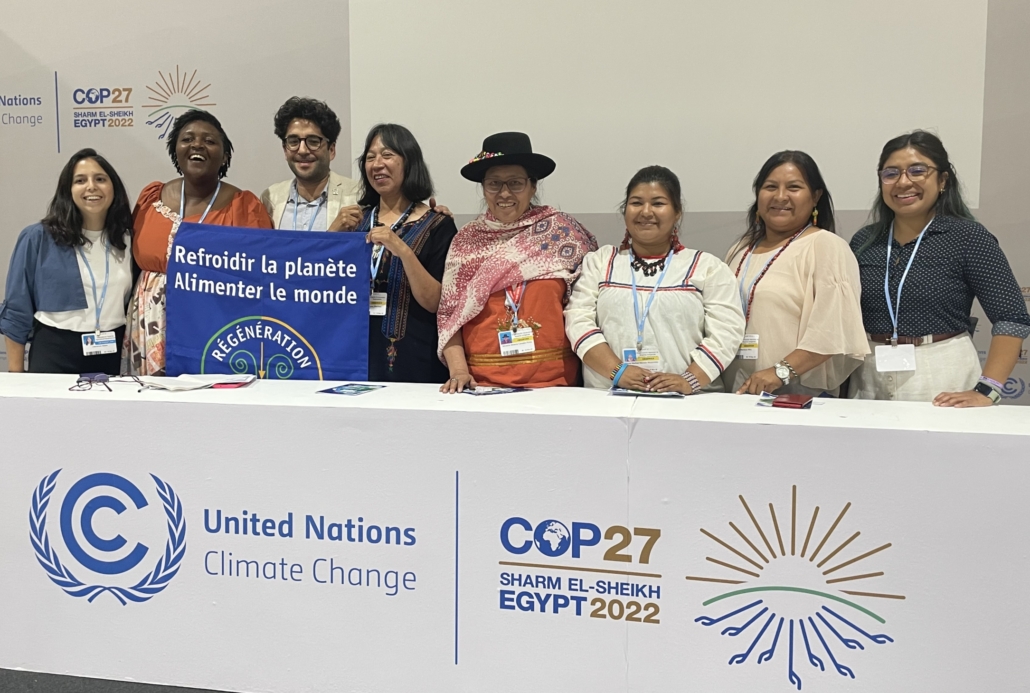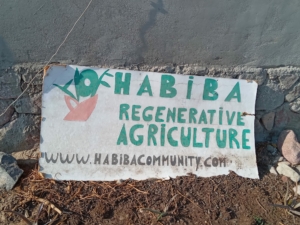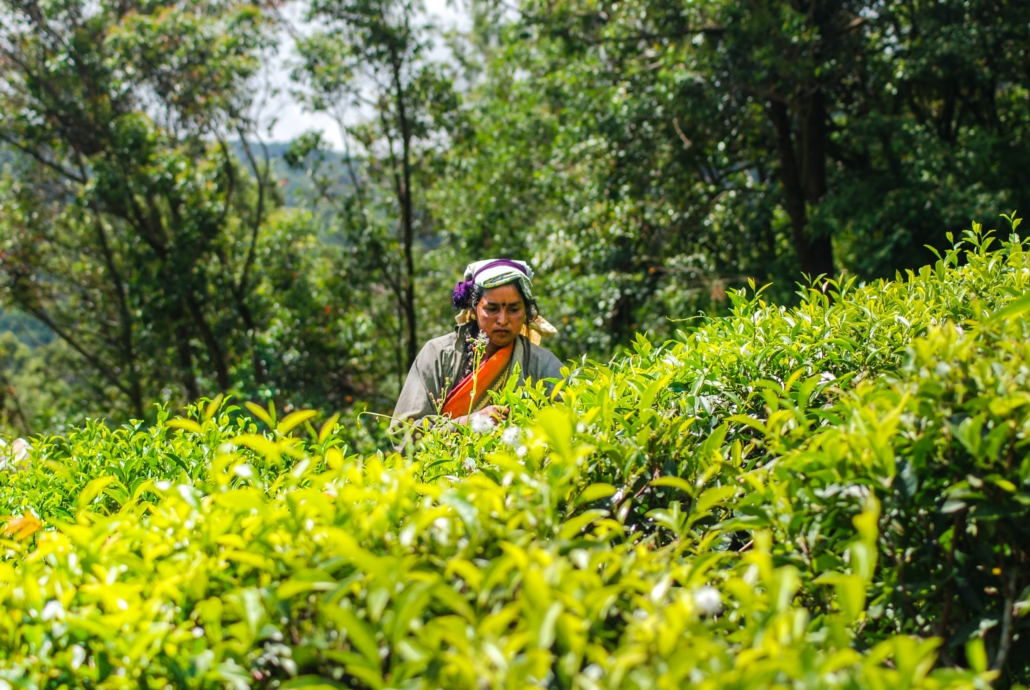Un grupo de mujeres de Abya Yala[1] elevó sus voces firmes y profundas, para hablar sobre la soberanía alimentaria en regiones tan distintas pero tan hermanadas como América y África en la COP 27 de Egipto el pasado 16 de noviembre de 2022, desde organizaciones como Regeneration International y OMANIAP.
En el auditorio Tutankamón del área verde de la cumbre climática, las potentes voces femeninas reflexionaron sobre el impacto del cambio climático en las vidas de las mujeres desde sus comunidades, las consecuencias para la soberanía alimentaria, la importancia de las ciencias y tecnologías ancestrales, demandando políticas públicas para garantizar sus derechos, sus territorios, el agua, la biodiversidad, sus semillas y preservar sus alimentos tradicionales.
Fue así como Mercedes López, Directora de Vía Orgánica en la Ciudad de México inició la discusión en el panel hablando sobre la necesidad de que las comunidades opten por el concepto de soberanía alimentaria en lugar de seguridad alimentaria (usado por la FAO), debido a que el primero es más integral y prioriza los alimentos, semillas ancestrales, territorios y agua de los pueblos; la decisión y el derecho de alimentarse por generaciones con comida sana, local y de calidad; el derecho a protegerse de importaciones agrícolas de mala calidad lejanas a su dieta tradicional; la participación de las comunidades en la definición de la política agraria; así como la dignificación y reconocimiento del trabajo de campesinas y campesinos que nos alimentan.
Mientras que, expuso, la seguridad alimentaria sólo se refiere a garantizar alimentación sin importar su procedencia, si se utilizaron agroquímicos y semillas transgénicas, o si son ultraprocesados; todo esto sin respetar ni considerar las costumbres y tradiciones alimentarias de las regiones.
Hizo énfasis en la labor comprometida e incansable de las mujeres en toda la cadena alimentaria, sin ser reconocidas ni valorarse su gran aporte en el tema. También denunció que Coca cola y Nestlé estuvieran patrocinando la COP 27 cuando son empresas que han contribuido, con la priorización de la agricultura industrial, a calentar el planeta y a causar pandemias de obesidad y desnutrición a nivel global; además de contaminar el planeta con sus envases plásticos.
Por su parte, Precious Phiri, Coordinadora Africana de Regeneration International, indicó que el cambio climático está impactando fuertemente a las mujeres del sur global, e hizo el señalamiento de que el término cambio climático no le parece suficientemente fuerte y que sería mejor hablar de emergencia climática, porque las consecuencias no sólo son económicas sino también sociales.
Indicó que es importante rebasar el concepto de seguridad alimentaria, porque con esa base grupos de donantes están empujando a que las comundidades tengan acceso a cualquier tipo de alimentación, a partir de su modelo de revolución verde impulsado por la agroindustria, sin atender la diversidad y especificidad de la alimentación entre las distintas comunidades.
Esto representa un desafío grande para que las comunidades campesinas y agricultoras que están presionadas para adoptar un modelo que les coloca en situaciones de inseguridad y la respuesta termina siendo superior al problema. Concluyó su participación comentando que la emergencia climática está creando una situación económica, ambiental y social muy grave y que afecta más a las mujeres que tienen el reto de alimentar a sus familias.
Mientras que Wilma Mendoza, Presidenta de la Confederación Nacional de Mujeres Indígenas de Bolivia (CNAMIB) contó cómo las mujeres indígenas han enfrentado las pérdidas y los transgénicos en agricultura, y cómo luchan para mantener su identidad, semillas y territorios.
Explicó que en Bolivia los temas de soberanía y seguridad alimentarias están incluidos en el Plan de Desarrollo, pero que en la realidad continúan favoreciéndose los monocultivos.
Dijo que las mujeres están trabajando y son más concientes sobre la necesidad de consumir alimentos propios sin agroquímicos ni transgénicos, que están cuidando y recuperando semillas, buscando mantener el equilibrio, porque son las más afectadas por sequías, inundaciones, heladas, plagas y la aparición de animales silvestres que han abandonado sus hábitas por la deforestación.
En su turno Mayra Macedo, Secretaria de Organización de la Organización Nacional de Mujeres Indígenas Andinas y Amazónicas del Perú (ONAMIAP) contó que las políticas públicas y los programas alimentarios en Perú, son inadecuadas y promueven monocultivos como palma aceitera y papaya, invadiendo sus tierras en la amazonía, destruyendo la selva y contaminándola.
Indicó que existen 2 programas sociales sobre alimentación centrales, el de desayunos escolares que es deficiente porque incluye alimentos y bebidas ultraprocesadas, que sólo benefician la economía de las empresas que venden estos productos y no a las comunidades.
El otro programa de apoyo es la entrega de alimentos de traspatio, como los cuyes, que no sobreviven en la región amazónica pues son de climas frios como los andes; por lo que criticó los programas sociales por su falta de visión y conocimiento de las comunidades.
Por ello hizo un llamado a que las mujeres ocupen espacios de toma de decisión donde se diseñen los programas sociales para recuperar su soberanía alimentaria desde los territorios y problemáticas específicas y para detener leyes que les afectan.
La siguiente expositora fue Melania Canales Poma, Lideresa del Pueblo Quechua y Coordinadora del Enlace Continental de Mujeres Indígenas de las Américas (ECMIA- Región Sur) contó que las mujeres indígenas exigimos garantías y respeto a territorios colectivos, documentando que por ejemplo, en Peru 49% del territorio está en manos de comunidades campesinas y nativas, pero las tierras están siendo invadidas, están siendo despojadas de distintas formas legales y existe mucha preocupación.
Se cuestionó sobre dónde van a construir soberanía alimentaria las mujeres, si las despojan de sus territorios colectivos, por eso es importante revisar la situación jurídica de los territorios, demandó, para seguir produciendo nuestro alimento, nuestras medicinas ancestrales y fortaleciendo nuestra espiritualidad.
Hizo un recuento de la lucha de las mujeres indígenas quienes se han manifestado contra los transgénicos levantando su voz, así como defendiendo y revitalizando los conocimientos, ciencia y tecnología ancestrales, que son determinantes para la adaptación al cambio climático, y que tienen que seguirse transmitiendo desde las mujeres indígenas.
Cerro su participación diciendo que las mujeres indígenas no sólo existen, sino que siempre han venido trabajando propuestas, exigiendo y demandando derechos y oponiéndose al machismo, extractivismo y despojo que las van ahogando.
La participación cerró con una serie de comentarios y preguntas por parte del público asistente, resumiendo la importancia de preservar las metodologías, conocimientos y ciencia indígena de las ancestras; de resistir la transculturación de alimentación y costumbres colonialistas adquiridas por la migración; exigiendo reconocimiento y visibilización de los aportes de las mujeres con pagos justos; organización en espacios bioculturales; así como preservando tradiciones ancestrales como la captación de agua de lluvia para enfrentar la escasez que está prevaleciendo en el mundo.
En conclusión, podemos decir que aunque este fue un espacio pequeño en medio de un mundo de side events, conferencias, manifestaciones culturales y discusiones de alto nivel y la presencia de comunidades diversas, que hermanó las voces fuertes, profundas y sabias de un grupo de mujeres que desde Abya Yala se organizan, luchan y proponen nuevas alternativas todos los días para defender la biodiversidad, las semillas, el territorio y la dignidad de las mujeres desde las comunidades diversas de todo el mundo.
[1] Abya Yala en idioma Kuna (Colombia y Panamá) significa tierra vida, territorio, tierra en florecimiento. «Abia» significa «agujero de la sangre», «madre madura», «virgen madura», «tierra en plena madurez». El término es utilizado para nombrar al territorio comprendido en el Continente Americano.



